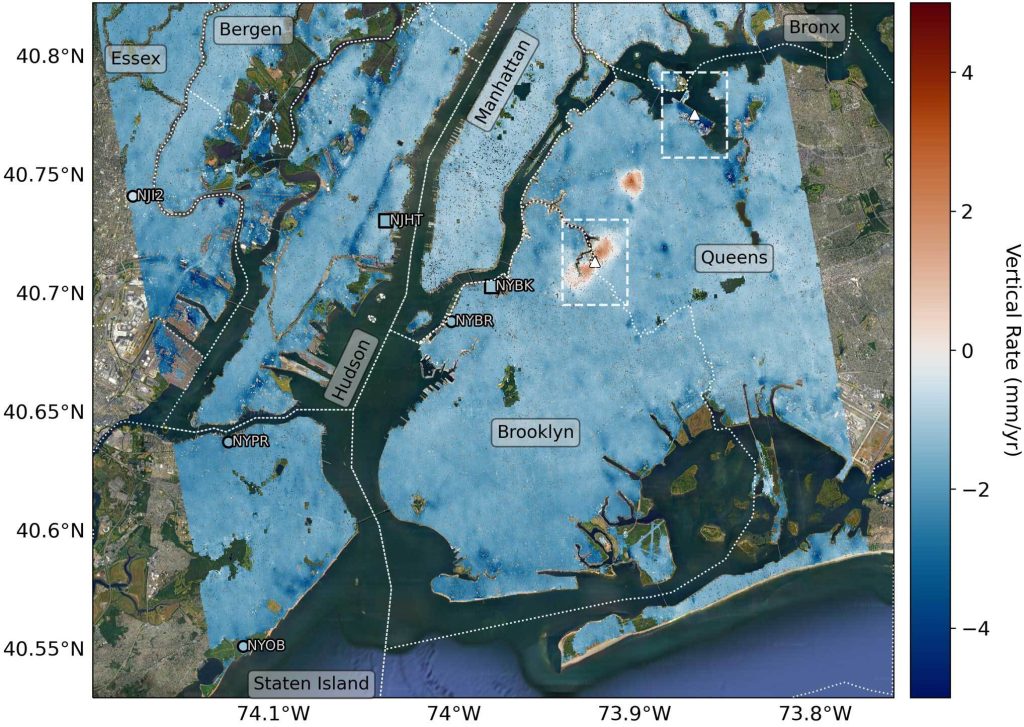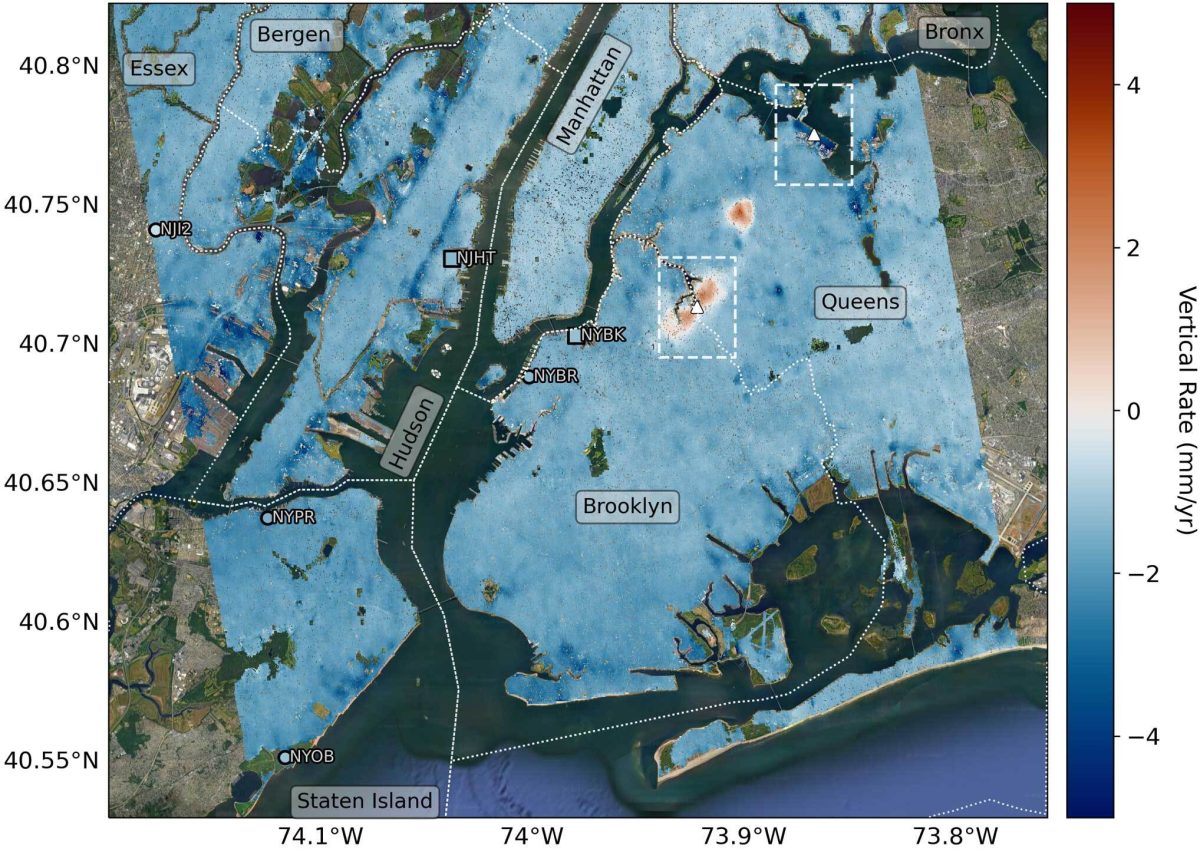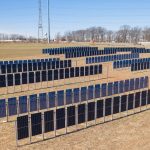
Researchers from NASA’s Jet Propulsion Laboratory and Rutgers University, including RCEI Affiliates Ken Miller and Robert Kopp, have published a new study in Science Advances finding that parts of the New York City metropolitan area are sinking and rising at different rates due to various man-made and natural factors which can mitigate or enhance local flood risk associated with sea level rise and therefore have implications for resilience planning. The study analyzed uplift and subsidence across the metropolitan area using a remote sensing technique called interferometric synthetic aperture radar (InSAR).“I’m intrigued by the potential of using high-resolution InSAR to measure these kinds of relatively short-lived environmental modifications associated with uplift,” Kopp said.








